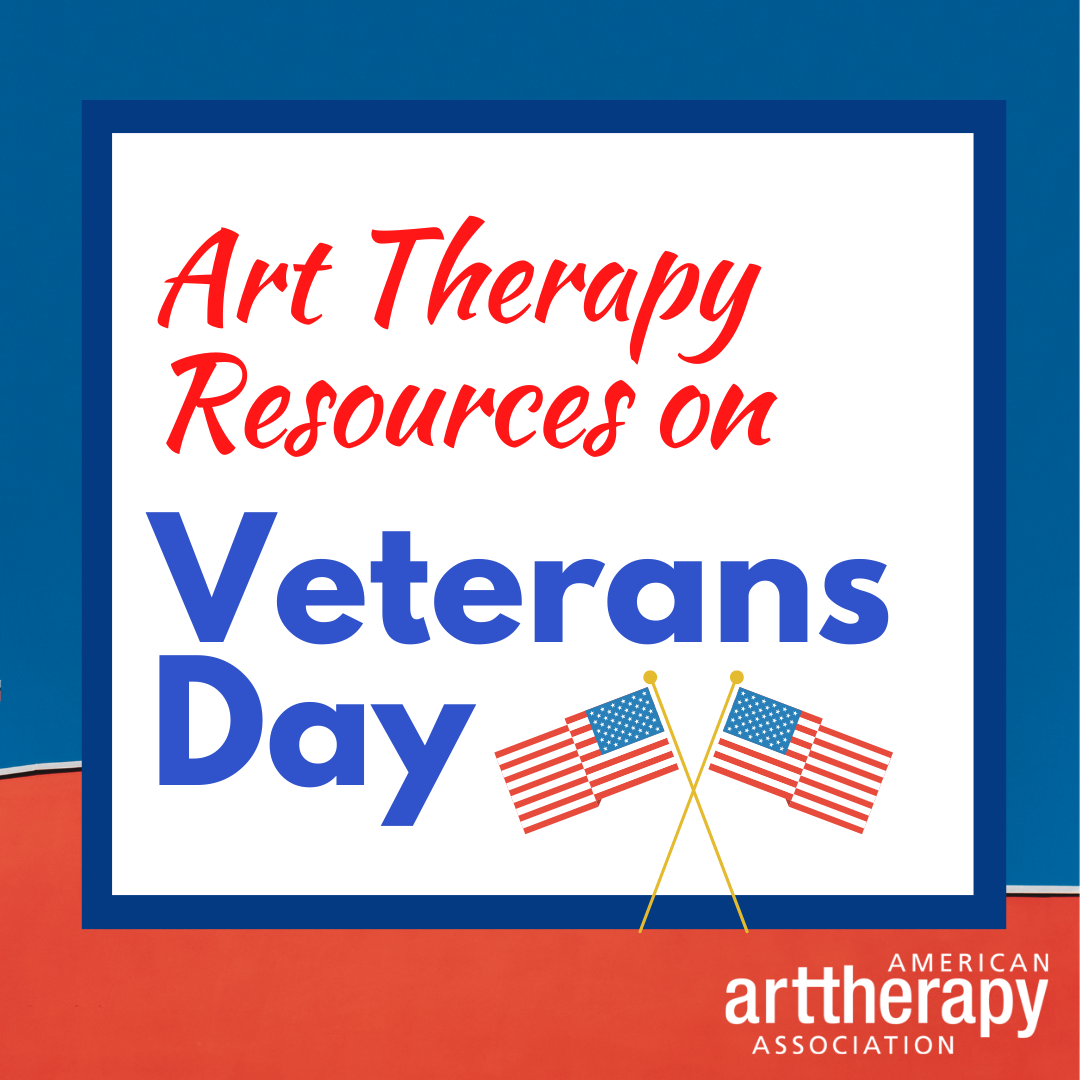November 1, 2024
While art interventions have long been used with veterans and service members, increases in mental health issues make it more important than ever to highlight the work art therapists do to support these communities and their families.
If you have a resource or recent research about art therapy and veterans and active duty service members, please share on the MyAATA community or by emailing us at info@arttherapy.org.

Recent Research by the VA Examines Women Veterans
- A recent study by the Department of Veterans Affairs (VA) on the impact of suicide on women veterans in particular demands urgent attention. Between 2020 and 2021, the suicide rate among women veterans increased 24.1%—nearly 4 times higher than the 6.3% increase among male veterans and vastly higher than the 2.6% increase among non-veteran women.
- Nearly one-third (29%) of veterans of Operations Iraqi Freedom (OIF) and Enduring Freedom (OEF) will experience PTSD at some point in their lives.
- Military sexual trauma (the term used by the VA) accounts for all sexual assault and sexual harassment that happens during military service. Among female veterans seen by VA providers, rates of military sexual trauma are about one in three—considered a possible driver of high female veteran PTSD rates. This doesn’t account for veterans who don’t see VA-provided care.
Art Therapy is Particularly Helpful for Veterans
For returning service members and veterans suffering from PTSD for example, art therapy is used to reduce debilitating symptoms, provide opportunities for expression and resolution of painful memories, and enhance stress reduction through art-based relaxation techniques and coping skills.
- A 2018 study found that art therapy experiences fostered improvement in interpersonal relatedness, hopefulness and gratification for the service members in treatment, and helped them construct a trauma narrative imperative for recovery.
“Visual arts offer veterans suffering from PTSD a nonthreatening alternative to compose in images what is inexpressible to them with words,” described Rosemarie Rogers, ATR-BC, LCAT. “It is a way in and often the first step to organize and express overwhelming feelings and sensations they experience. Most importantly, their own artwork becomes the narrative to tell their story and is the foundation that we use to begin therapy.”
Art Interventions have been Used Since World War I.
Therapeutic art interventions were used with service members and veterans during World War I by occupational therapists, Red Cross volunteers and artists, some of whom created wearable masks for disfigured soldiers.
Adrian Hill was a British soldier, artist, and author, who first coined the term “art therapy” in 1942. Hill recognized the power of art-making itself as healing while working with soldiers recovering from tuberculosis during World War I.
From 1944 – 48, the Museum of Modern Art (MOMA) hosted the War Veterans’ Art Center and used therapists trained in the visual arts to help with rehabilitation. “The principle object of the Center” which served 1,485 post World War II veterans, “was to help veterans adjust themselves through the creative process,” according to a 1948 MOMA press release.

Poster for the War Veterans’ Art Center
Circa 1941–45
Join Us in Sharing Resources
If you are an AATA Member, and work with active-duty service members, veterans, and their families—or are a veteran or service member—please consider joining the Veterans Shared Interest Group (SIG). The Veterans SIG meets during conferences and also connects via the MyAATA community. (Join the Veterans SIG)
If you have resources, fact sheets, or research you’d like AATA to share, please post it in MyAATA or email us at info@arttherapy.org. We are compiling resources to share on our website on Veterans Day, Nov. 11.
Not an AATA Member? Learn more about member benefits.
